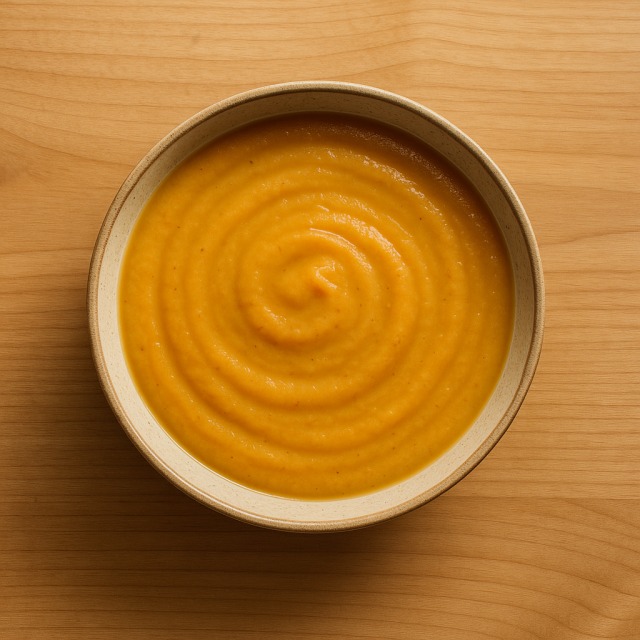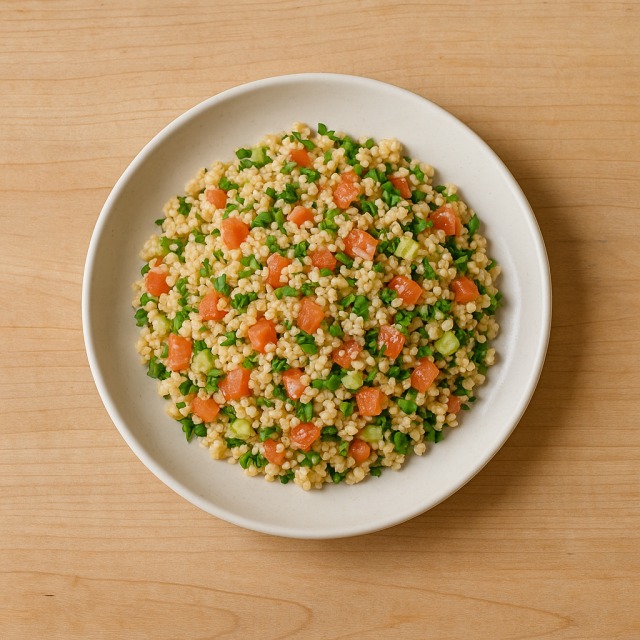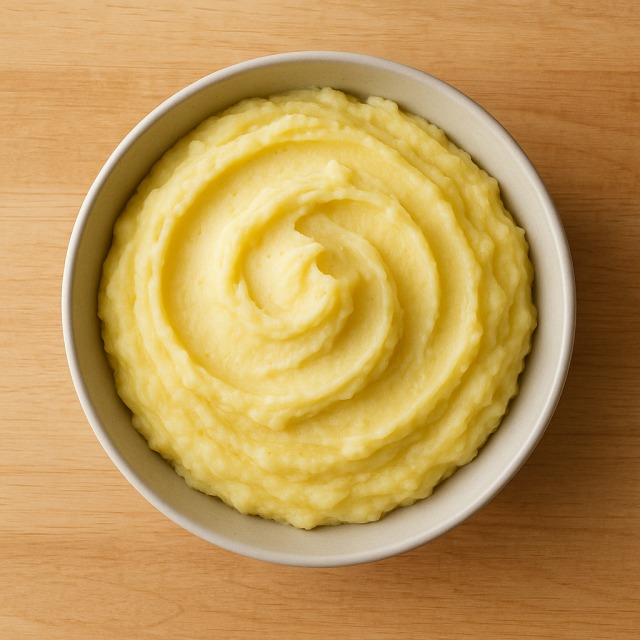Calorie Chart / Vegetables / Creamy vegetable soup
How Many Calories Are in Creamy vegetable soup?
Calculation of the nutritional value & Recommended Dietary Intake of creamy vegetable soup
For ml and a calorie requirement of kcal
| Calories 335 kcal | Proteins 6.3 g | Lipids 20 g | Carbohydrates 33 g |
| 17% | 8% | 30% | 12% |
Health benefits of creamy vegetable soup

Creamy vegetable soup - 100ml
Calories 134 kcal
Proteins 2.5 g
Lipids 8 g
Carbohydrates 13 g
With 134 calories per 100 g, creamy vegetable soup can be classified as a moderate-calorie dish: not as light as a clear vegetable soup, yet far less energy-dense than a cream-based sauce. Those calories are split between 2.5 g of proteins, 8 g of lipids and 13 g of carbohydrates, offering a relatively balanced macronutrient profile.
The mix of vegetables generally used (carrot, leek, potato, pumpkin or zucchini) supplies provitamin A (beta-carotene), vitamin C, vitamin K and folate, while the addition of cream contributes calcium and vitamin B12. Potassium, magnesium and dietary fibre round out the mineral side, making the soup interesting for blood pressure regulation and digestive comfort without a huge calorie burden.
A hot bowl is often recommended before the main course: its volume helps curb appetite, so you may naturally reduce subsequent calorie intake. Supposed benefit: the warm temperature and creamy mouthfeel stimulate satiety hormones (GLP-1, CCK), a phenomenon still being studied but worth noting for anyone monitoring calories.
Historically, velouté-style soups appeared in French cuisine in the 19th century as a way to enrich peasant vegetable broths with milk or cream when animal fat became more affordable. Knowing this context can help you view those calories as part of a nourishing tradition rather than an indulgence.
Tips for incorporating creamy vegetable soup into a balanced diet
To keep the calories under control, serve 250 ml of creamy vegetable soup with a slice of toasted wholemeal bread and a lean protein such as grilled chicken breast. This trio stays filling while preventing the meal from tipping into excessive calorie territory.
If you need more energy after training, pair the soup with a portion of quinoa or add some sautéed shrimp or prawn directly into the bowl; both options boost proteins without exploding the calories.
Looking for a lighter variation? Replace cream with a spoon of light yogurt or puréed cauliflower; you can shave about 20 calories per 100 g while retaining smoothness. Conversely, athletes in a bulking phase may swirl in extra-virgin vegetable oil to raise healthy fats and calories deliberately.
Seasonal idea: turn your creamy vegetable soup into a "green velouté" by using spinach, peas and broccoli. Besides vivid colour, the blend delivers more vitamin K and still moderate calories, perfect for a spring detox menu.
Frequently Asked Questions
- How many calories are in creamy vegetable soup?
- There are 134 kcal per 100 g.
- Is creamy vegetable soup good for weight loss despite its calories?
- Yes, if you keep portions around 250–300 ml, the soup contributes roughly 120–160 calories, adds fibre and helps you feel full, which can reduce overall calories consumed at the meal.
- Which vitamins justify those calories?
- The calories come with beta-carotene, vitamin C, folate and potassium from the vegetables, plus calcium and vitamin B12 from the dairy component.
- Can I freeze creamy vegetable soup without changing its calorie content?
- Freezing does not alter calories; macronutrients remain the same after thawing, although texture may become slightly grainy.
- How can I lower the calories of my homemade creamy vegetable soup?
- Replace full-fat cream with semi-skimmed milk or stir in light crème fraîche; you can cut up to 40 calories per 100 g.
- How do the calories compare to gazpacho?
- Gazpacho averages around 45–60 kcal per 100 g, so creamy vegetable soup provides roughly twice to three times the calories, mainly due to added lipids from cream.
Similar foods
Information provided by Calorie Menu may contain inaccuracies or errors. It cannot, under any circumstances, substitute medical advice or medication.










